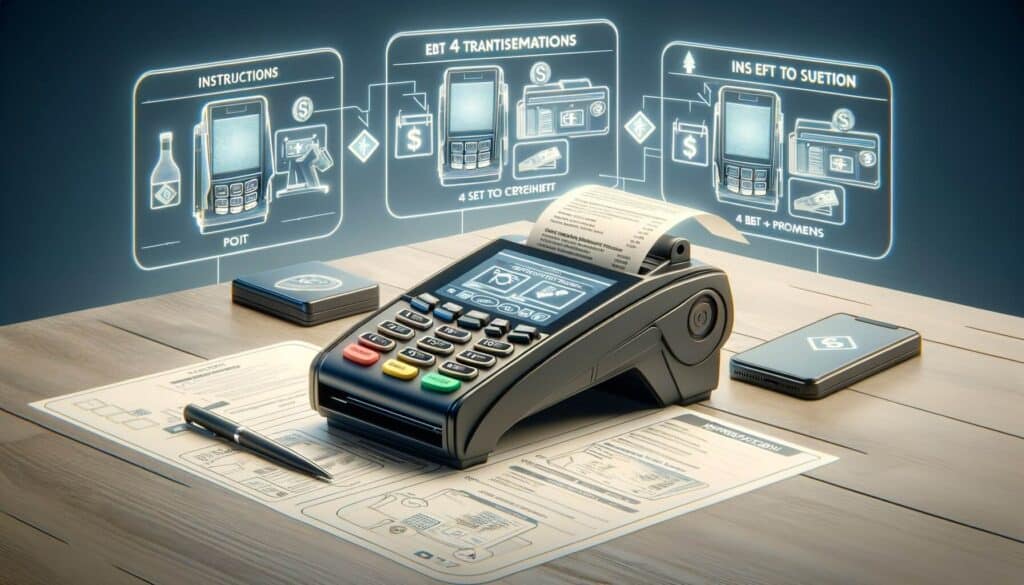
By Sharon Watson February 22, 2025
In today’s digital age, managing transactions efficiently and securely is crucial for businesses of all sizes. One particular type of transaction that requires careful handling is Electronic Benefit Transfer (EBT) transactions. EBT transactions involve the use of government-issued debit cards to provide benefits such as food assistance to eligible individuals and families.
To effectively manage EBT transactions, businesses can leverage the power of Point of Sale (POS) systems. In this comprehensive guide, we will explore how to manage EBT transactions with your POS system, covering everything from understanding the benefits of using a POS system for EBT transactions to troubleshooting common issues and implementing best practices.
Understanding the Benefits of Using a POS System for EBT Transactions

1. Streamlined Transaction Processing: A POS system automates the process of handling EBT transactions, making it faster and more efficient. With a few simple steps, the system can process EBT payments, reducing the time spent on manual calculations and paperwork.
2. Accurate Tracking and Reporting: POS systems provide detailed reports and analytics, allowing businesses to track EBT transactions accurately. This feature is particularly useful for businesses that need to reconcile their EBT transactions with government agencies or auditors.
3. Inventory Management: A POS system can integrate with your inventory management system, enabling real-time tracking of EBT-eligible items. This integration ensures that you can easily identify and manage inventory items that can be purchased using EBT benefits.
4. Enhanced Customer Experience: By using a POS system for EBT transactions, businesses can provide a seamless and convenient experience for customers. The system can quickly verify EBT card balances, reducing the risk of declined transactions and ensuring a smooth checkout process.
Choosing the Right POS System for EBT Transactions

Selecting the right POS system for managing EBT transactions is crucial for the success of your business. Here are some factors to consider when choosing a POS system:
1. EBT Integration: Ensure that the POS system you choose has built-in EBT integration capabilities. This integration allows for seamless processing of EBT transactions and eliminates the need for manual entry or separate EBT terminals.
2. Security Features: Look for a POS system that offers robust security features to protect sensitive customer data during EBT transactions. Features such as encryption, tokenization, and secure payment gateways are essential for maintaining the integrity of EBT transactions.
3. Scalability: Consider the scalability of the POS system to accommodate your business’s growth. As your business expands, you may need to process a higher volume of EBT transactions. Ensure that the POS system can handle increased transaction volumes without compromising performance.
4. User-Friendly Interface: A user-friendly interface is crucial for efficient EBT transaction management. Look for a POS system that is intuitive and easy to navigate, minimizing the learning curve for your staff.
Setting Up Your POS System for EBT Transactions

Once you have chosen the right POS system for managing EBT transactions, it’s time to set it up correctly. Follow these steps to ensure a smooth setup process:
1. EBT Account Setup: Contact the appropriate government agency to set up an EBT account for your business. This account will enable you to accept EBT payments and receive reimbursements for eligible transactions.
2. System Configuration: Configure your POS system to accept EBT payments. This process may involve entering specific EBT settings, such as card types and transaction limits, into the system.
3. Employee Training: Train your employees on how to process EBT transactions using the POS system. Ensure that they understand the steps involved, including verifying card balances, selecting eligible items, and completing the transaction.
4. Testing and Validation: Before accepting live EBT transactions, conduct thorough testing to ensure that the POS system is functioning correctly. Test various scenarios, such as different card types and transaction amounts, to validate the system’s accuracy and reliability.
Processing EBT Transactions with Your POS System
Now that your POS system is set up for EBT transactions, let’s explore the process of processing these transactions:
1. Card Verification: When a customer presents an EBT card for payment, the first step is to verify the card’s validity. The POS system will check the card’s expiration date, cardholder information, and any restrictions or limitations associated with the card.
2. Balance Inquiry: After verifying the card, the POS system will initiate a balance inquiry to determine the available funds on the EBT card. This step ensures that the transaction amount does not exceed the card’s balance.
3. Item Selection: Once the card’s balance is confirmed, the customer can select eligible items for purchase. The POS system will have a designated button or option to identify EBT-eligible items, making it easy for both the customer and the cashier.
4. Transaction Completion: After the customer has selected their items, the cashier will complete the transaction by finalizing the payment. The POS system will deduct the transaction amount from the EBT card’s balance and generate a receipt for the customer.
Troubleshooting Common Issues with EBT Transactions on POS Systems
While POS systems are designed to streamline EBT transactions, occasional issues may arise. Here are some common issues and their troubleshooting steps:
1. Card Declined: If an EBT card is declined, ensure that the card is valid and has sufficient funds. If the issue persists, check the POS system’s settings to ensure that it is configured correctly for EBT transactions.
2. Connectivity Problems: If the POS system is unable to connect to the EBT network, check your internet connection and ensure that the POS system’s network settings are configured correctly. If the issue persists, contact your POS system provider for further assistance.
3. Incorrect Item Eligibility: If an item is incorrectly identified as EBT-eligible or ineligible, review your inventory settings in the POS system. Ensure that the correct items are marked as eligible for EBT transactions.
4. Reimbursement Delays: If you experience delays in receiving reimbursements for EBT transactions, contact the appropriate government agency to inquire about the status of your reimbursement requests. Keep detailed records of your transactions to facilitate the reconciliation process.
Best Practices for Managing EBT Transactions with Your POS System
To optimize your EBT transaction management, consider implementing the following best practices:
1. Regular System Updates: Keep your POS system up to date with the latest software updates and security patches. Regular updates ensure that your system remains secure and performs optimally.
2. Staff Training and Support: Continuously train your staff on EBT transaction processing and provide ongoing support. Regular training sessions and refresher courses will help your employees stay up to date with any changes in EBT regulations or procedures.
3. Transaction Monitoring: Regularly monitor EBT transactions to identify any anomalies or suspicious activities. Implement transaction monitoring tools or reports provided by your POS system to detect any potential fraud or misuse of EBT benefits.
4. Compliance with Regulations: Stay informed about the latest EBT regulations and ensure that your business complies with all requirements. Regularly review your processes and procedures to ensure compliance and avoid any penalties or fines.
Enhancing Security and Compliance in EBT Transactions with Your POS System
Security and compliance are paramount when managing EBT transactions. Here are some measures to enhance security and compliance:
1. Data Encryption: Ensure that your POS system encrypts sensitive customer data during EBT transactions. Encryption protects data from unauthorized access and ensures compliance with data protection regulations.
2. Tokenization: Implement tokenization, which replaces sensitive cardholder data with unique tokens. Tokenization reduces the risk of data breaches and minimizes the scope of compliance audits.
3. Secure Payment Gateways: Use secure payment gateways that comply with industry standards, such as Payment Card Industry Data Security Standard (PCI DSS). Secure payment gateways encrypt data during transmission, protecting it from interception or tampering.
4. Regular Audits and Assessments: Conduct regular audits and assessments of your POS system’s security controls. This process helps identify any vulnerabilities or weaknesses that could compromise the security of EBT transactions.
Frequently Asked Questions about EBT Transactions and POS Systems
Q1. Can I use any POS system for EBT transactions?
A1. Not all POS systems support EBT transactions. Ensure that the POS system you choose has built-in EBT integration capabilities.
Q2. How long does it take to set up a POS system for EBT transactions?
A2. The setup time can vary depending on the complexity of your business and the POS system you choose. On average, it can take a few days to a couple of weeks to set up a POS system for EBT transactions.
Q3. Can I process EBT transactions offline?
A3. No, EBT transactions require an internet connection to verify card balances and process payments. Ensure that your POS system has a stable internet connection for seamless EBT transaction processing.
Q4. What happens if an EBT transaction is declined?
A4. If an EBT transaction is declined, it usually means that the card does not have sufficient funds to cover the transaction amount. The customer may need to use an alternative payment method or reduce the transaction amount.
Conclusion
Managing EBT transactions with a POS system offers numerous benefits, including streamlined transaction processing, accurate tracking and reporting, and enhanced customer experience. By choosing the right POS system, setting it up correctly, and following best practices, businesses can efficiently handle EBT transactions while ensuring security and compliance.
With the proper understanding and implementation of EBT transaction management, businesses can provide a seamless and convenient experience for both customers and staff.